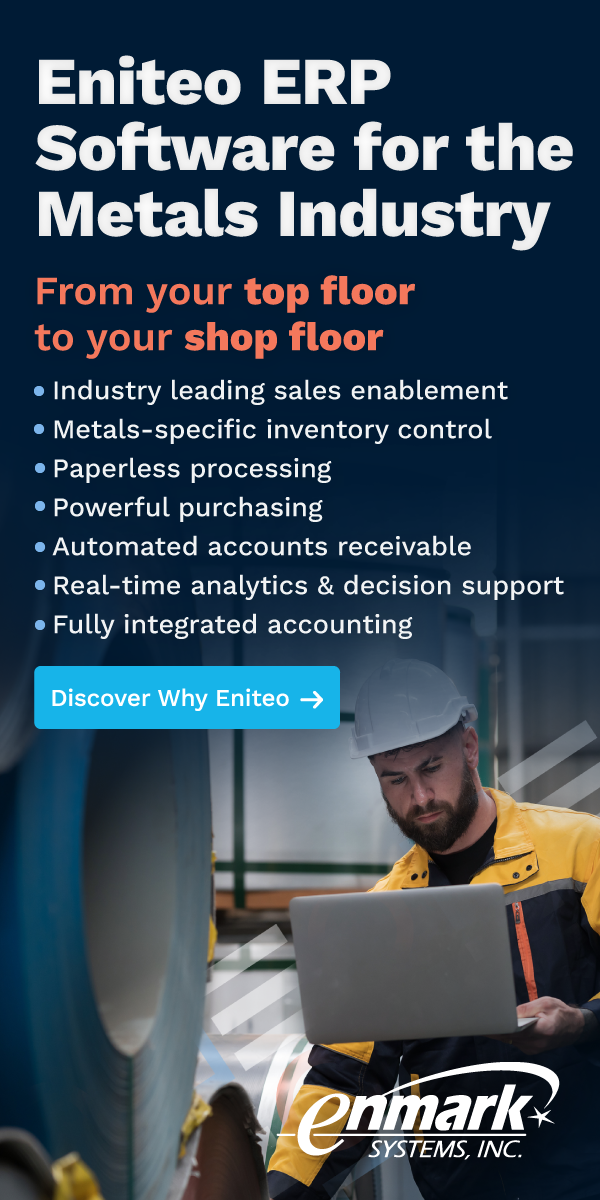The steel distribution industry stands at the precipice of a technological revolution that promises to fundamentally transform how steel products move from mills to end users. With the global steel market valued at nearly $1.5 trillion in 2024 and projected to reach $3.37 trillion by 2035, the integration of fully automated trucking systems operating 24/7 alongside advanced humanoid robots like Boston Dynamics’ Atlas and Figure 02 androids is creating unprecedented opportunities for efficiency, cost reduction, and competitive advantage in steel distribution operations.
This transformation addresses critical industry challenges including severe labor shortages affecting 76% of supply chain companies, rising operational costs, and the demanding nature of steel handling operations that require both precision and endurance. The convergence of autonomous trucking technology and sophisticated humanoid robotics represents more than incremental improvement—it signals a complete paradigm shift toward unmanned, continuous operations that could revolutionize steel distribution economics.
The Current State of Steel Distribution: Challenges Demanding Innovation
The steel distribution sector faces mounting pressures that traditional operational models struggle to address effectively. Supply chain disruptions, price volatility, and quality control complexities have become persistent challenges, while the industry grapples with an aging workforce and difficulty attracting skilled operators to physically demanding and often hazardous roles.
Current steel distribution operations typically involve multiple manual touchpoints, from coil handling and processing to packaging and loading operations. These processes are not only labor-intensive but also subject to human limitations including work hour restrictions, fatigue-related errors, and safety concerns when handling heavy steel components that can weigh several tons. The traditional model often results in operational inefficiencies, with equipment utilization rates averaging only 80% uptime compared to the 95%+ uptime achievable through automated systems.
Transportation logistics present additional complications, with steel distributors facing challenges including traffic congestion, high fuel costs, infrastructure limitations, and regulatory compliance requirements. The heavy weight and specialized handling requirements of steel products further compound these challenges, often requiring specialized equipment and experienced operators who are increasingly difficult to find and retain.
Table 1: Steel Market Overview & Growth Projections
Key Takeaway:
The steel sector is enormous, global, and increasingly relying on technology and automation for growth, efficiency, and to address labor and supply chain challenges.
Autonomous Trucking: 24/7 Steel Distribution Operations
The emergence of fully autonomous trucking systems represents a transformative solution for steel distribution challenges. Companies like Aurora Innovation have successfully deployed driverless trucks operating at SAE Level 4 autonomy, achieving commercial operations that include nighttime driverless operations expanding beyond traditional daylight-only restrictions. These systems demonstrate the practical viability of continuous autonomous operations specifically designed for heavy freight applications.
Aurora’s autonomous trucks have already surpassed 20,000 driverless miles and operate with three-truck fleets on established routes like the Dallas-to-Houston corridor. The expansion to Phoenix terminals and nighttime operations showcases the technology’s readiness for the demanding requirements of steel distribution, where timely delivery and load security are paramount concerns. The Aurora Driver system utilizes advanced FirstLight Lidar technology capable of detecting objects more than 450 meters away, providing 11 seconds advance warning compared to human drivers—a critical safety advantage when transporting heavy steel loads.
The operational advantages for steel distribution are compelling. Autonomous trucks can operate nearly 24/7, stopping only for refueling, maintenance, and load changes. This continuous operation capability doubles daily range from traditional 600 miles to 1,200 miles per day, significantly increasing delivery capacity without expanding fleet sizes. For steel distributors, this translates to faster turnaround times, more predictable delivery schedules, and the ability to serve broader geographic markets without proportional increases in transportation assets.
Cost benefits are substantial and multifaceted. Labor cost reductions eliminate the need for long-haul drivers on autonomous routes, while enhanced fuel efficiency through optimized routing and consistent driving patterns reduces operational expenses. Insurance cost reductions result from improved safety records, as autonomous systems eliminate human factors that contribute to 400,000 annual truck-related accidents on US highways. The combination of increased utilization and reduced costs creates a compelling economic case for steel distributors seeking competitive advantages.
Humanoid Robotics: Precision Automation for Steel Processing Operations
The integration of advanced humanoid robots into steel distribution operations represents an equally revolutionary development. Boston Dynamics’ Atlas robot, completely redesigned as an all-electric system in 2024, and Figure 02 humanoid androids have demonstrated remarkable capabilities specifically applicable to steel distribution processes.
Boston Dynamics Atlas features custom high-powered electric actuators distributed throughout its frame, enabling strength and agility that exceeds human capabilities. The robot’s advanced perception systems incorporating LiDAR and stereo vision allow for precise object detection and manipulation in complex industrial environments. Most significantly for steel distribution, Atlas can move and bend its body in ways that exceed human range of motion, providing unique advantages for accessing and manipulating steel components in confined spaces or unusual orientations.
Figure 02 robots bring complementary capabilities with their 70-kilogram weight, 170-centimeter height, and 20-kilogram load capacity. The robots achieve millimeter-level precision with 0.1mm accuracy and feature 16 active degrees of freedom per hand, providing human-like dexterity for complex manipulation tasks. BMW’s successful pilot testing of Figure 02 robots in production environments demonstrates their readiness for industrial applications, including sheet metal handling and precise component positioning.
For steel distribution operations, these capabilities translate into comprehensive automation across critical processes. Steel coil handling becomes safer and more efficient as robots can manipulate heavy coils with consistent precision while eliminating human exposure to potential crush hazards. Cut-to-length operations benefit from robots’ ability to measure, position, and cut steel with accuracy that exceeds manual capabilities while maintaining consistent quality standards.
Slitting operations gain significant advantages from robotic automation, as humanoid robots can adjust slitting equipment, handle multiple steel strips simultaneously, and maintain precise tolerances throughout extended production runs. Turin Robotics’ Steel Coil Unbundling & Surface Defect Inspection System exemplifies these capabilities, using industrial-grade 6-axis robots to remove straps, inspect surfaces for defects, and perform quality assessments automatically.
Table 2: Benefits of Trucking Automation & Humanoid Robotics in Steel Distribution
Key Takeaway:
Both trucking automation and humanoid robotics deliver substantial cost savings, productivity improvements, and safety advancements for steel distributors. The payoff is tangible within just a few years.
Integrated Automation: The Synergy of Trucking and Robotics
The true transformation potential emerges when autonomous trucking and humanoid robotics operate as integrated systems. This integration creates seamless material flow from initial coil processing through final product delivery, with minimal human intervention required throughout the entire distribution chain.
Automated loading sequences begin when humanoid robots receive steel coils from processing equipment, inspect them for defects, apply appropriate packaging, and position them for transportation. The robots can communicate directly with autonomous trucking systems to coordinate loading schedules, verify load configurations, and ensure proper weight distribution for safe transport. This digital integration eliminates the communication gaps and scheduling delays common in traditional operations.
Continuous operation capabilities become particularly powerful when both systems operate in coordination. While autonomous trucks handle long-distance transportation during nighttime hours when traffic is minimal, humanoid robots can prepare subsequent loads, conduct quality inspections, and organize materials for the next delivery cycle. This parallel processing approach maximizes facility utilization and eliminates traditional bottlenecks caused by sequential operations.
Quality control integration represents another significant advantage. Humanoid robots equipped with advanced vision systems can inspect steel surfaces, measure dimensions, and verify specifications before loading, while autonomous trucks can monitor load conditions during transport and alert receiving facilities to any detected issues. This continuous quality monitoring reduces the likelihood of customer complaints and return shipments.
Economic Impact and Return on Investment Analysis
The economic implications of integrated trucking and robotics automation for steel distributors are substantial and measurable. Industry data indicates that automation investments typically achieve ROI timeframes of 12–18 months for control systems and 1.5–3 years for comprehensive robotics implementations.
Labor cost reductions represent the most immediate and significant impact area. Steel distribution operations can reduce labor dependency by up to 70%, particularly for repetitive tasks, heavy lifting operations, and long-haul transportation. With average steel worker wages continuing to rise and skilled operator availability declining, these labor savings compound annually and provide increasing value over time.
Operational efficiency improvements create additional value through increased throughput, reduced downtime, and improved asset utilization. Autonomous trucks operating 24/7 can double daily mileage while humanoid robots enable continuous processing operations without shift changes, break periods, or fatigue-related slowdowns. Case studies from steel automation implementations show uptime improvements from 80% to 95%+, translating directly to increased revenue generation capacity.
Quality improvements contribute to long-term financial benefits through reduced waste, fewer customer complaints, and enhanced reputation. Robotic systems achieving 99.9% accuracy rates significantly exceed typical human performance levels, while consistent quality standards support premium pricing strategies and customer retention.
Safety cost reductions provide both direct savings through lower insurance premiums and indirect benefits from reduced liability exposure and workers’ compensation claims. Steel distribution operations involve inherent risks from heavy machinery, sharp edges, and transportation hazards. Automation systems operating in unmanned environments virtually eliminate these human safety risks.
Implementation Challenges and Strategic Considerations
Despite compelling benefits, successful implementation of integrated trucking and robotics automation requires careful planning and strategic consideration of multiple factors. Initial capital requirements are substantial, with comprehensive automation systems requiring investments of $2–10 million depending on facility size and automation scope.
Technology integration complexity presents significant challenges, particularly for distributors operating legacy systems and established processes. Autonomous trucking systems require compatible loading facilities, communication infrastructure, and route optimization capabilities. Humanoid robots need appropriate workspace designs, safety systems, and integration with existing material handling equipment.
Regulatory compliance considerations vary by jurisdiction and continue evolving as autonomous technologies become more prevalent. Steel distributors must navigate transportation regulations, workplace safety requirements, and technology standards that may differ between operational locations. Early adopters often work closely with regulatory bodies to ensure compliance and influence future policy development.
Workforce transition management requires thoughtful planning to address employee concerns, provide retraining opportunities, and retain valuable institutional knowledge. Successful implementations typically involve existing workers in supervisory roles, maintenance functions, and customer service positions that leverage human expertise while benefiting from automated efficiency.
Future Developments and Industry Evolution
The trajectory of automation technology development suggests continued advancement in capabilities specifically relevant to steel distribution operations. Boston Dynamics plans to begin pilot testing Atlas robots at Hyundai facilities in early 2025, with broader commercial deployment following successful validation. Figure AI has established BotQ manufacturing facilities capable of producing 12,000 humanoid robots annually, indicating serious commercial commitment to industrial applications.
Autonomous trucking expansion continues accelerating, with Aurora Innovation and Kodiak Robotics expanding route networks and increasing fleet sizes. Kodiak’s commercial operations already serve major carriers across the United States, while Aurora’s successful nighttime operations demonstrate readiness for 24/7 steel distribution requirements.
Technology convergence trends point toward increasingly sophisticated integration between robotics, artificial intelligence, and transportation systems. 5G networks and edge computing capabilities enable real-time coordination between distributed automation systems, while machine learning algorithms continuously improve performance through operational experience.
Industry adoption patterns suggest larger steel distributors will lead initial implementations, creating competitive pressure for smaller operations to follow suit or risk market share loss. Early adopters gain first-mover advantages through operational cost reductions, service quality improvements, and enhanced capacity utilization that compound over time.
Strategic Recommendations for Steel Distributors
Steel distributors evaluating automation investments should adopt phased implementation approaches that balance risk management with competitive positioning. Initial phases might focus on specific high-impact applications such as automated coil handling or route-specific autonomous trucking before expanding to comprehensive integration.
Partnership strategies with technology providers offer reduced risk and faster implementation compared to independent development efforts. Aurora Innovation’s collaboration model with transportation companies and Boston Dynamics’ partnerships with industrial users provide proven frameworks for successful deployment.
Investment planning should consider long-term competitive dynamics rather than solely short-term ROI calculations. Automation advantages compound over time, while delayed adoption risks permanent competitive disadvantage as early adopters establish market position through cost and service advantages.
Workforce development programs should begin early in the planning process to ensure smooth transitions and maximize employee acceptance. Cross-training programs, technology familiarization, and clear career development paths help retain valuable personnel while building organizational capabilities for automated operations.
Conclusion: The Imperative for Transformation
The integration of 24/7 autonomous trucking and advanced humanoid robotics in steel distribution represents more than technological advancement—it constitutes a fundamental transformation of industry operating models and competitive dynamics. The convergence of Aurora’s proven autonomous trucking capabilities with Boston Dynamics Atlas and Figure 02 humanoid robots creates unprecedented opportunities for continuous operations, cost reduction, and service enhancement.
Industry data supporting this transformation is compelling: global steel market growth projections exceeding $3 trillion by 2035, automation ROI timeframes of 12–24 months, and operational efficiency improvements of 15–30% create powerful economic incentives for early adoption. Successful case studies from Aurora’s commercial trucking operations and BMW’s Figure 02 pilot programs demonstrate practical viability and measurable benefits.
The strategic question for steel distributors is not whether to adopt these technologies, but when and how to implement them most effectively. Market leaders who embrace integrated automation will establish sustainable competitive advantages through lower costs, higher quality, improved safety, and superior customer service. Those who delay adoption risk competitive disadvantage that becomes increasingly difficult to overcome as automated competitors establish market position.
The future of steel distribution is autonomous, continuous, and precisely orchestrated by advanced robotics and artificial intelligence. Forward-thinking distributors who act decisively to implement these technologies will shape industry standards and capture disproportionate value in the transformed marketplace.
SOURCES
Aurora announces nighttime driverless operations and Arizona expansion
https://www.freightwaves.com/news/aurora-announces-nighttime-driverless-operations-and-arizona-expansion
Large Behavior Models: Atlas Finds New Footing
https://bostondynamics.com/blog/large-behavior-models-atlas-find-new-footing/
Mastering Automation: Fully Automated Steelmaking
https://magazine.primetals.com/2022/07/21/mastering-automation-fully-automated-steelmaking/
Aurora Autonomous Trucking Dallas to Houston Corridor
https://resource-erectors.com/auroras-autonomous-trucks-how-heavy-industry-is-quietly-leading-the-ai-race/
The Future of Steel Delivery Autonomous Vehicles at the Helm
https://eoxs.com/new_blog/discover-insights-on-the-future-of-steel-delivery-autonomous-vehicles-at-the-helm-in-this-detailed-blog-perfect-for-steel-and-metals-industry-professionals/
The Role of Robotics in Enhancing Steel Processing Efficiency
https://eoxs.com/new_blog/the-role-of-robotics-in-enhancing-steel-processing-efficiency/
Steel Mill Automation: How AI and Robotics are Transforming the Industry
https://gmbindustries.com/steel-mill-automation-how-ai-and-robotics-are-transforming-the-industry/
Autonomous Freight Takes to the Rail, Road, Sea, and Air
https://www.asme.org/topics-resources/content/autonomous-freight-takes-to-the-rail,-road,-sea,-and-air
Steel distribution – Voortman Steel Machinery
https://www.voortman.net/en/industry/steel-distribution
Industrial Metal Processing and Steel Industry Automation Solutions
https://www.rockwellautomation.com/en-us/industries/metals-processing.html
From farming to mining, self-driving trucks are how humans do basic tasks – ABC7 News
https://abc7news.com/post/pronto-robotrucks-farming-mining-driving-trucks-are-how-humans-do-basic-tasks-driverless-tomorrow/16774375/
Atlas (robot) – Wikipedia
https://en.wikipedia.org/wiki/Atlas_(robot)
Humanoid Robots for BMW Group Plant Spartanburg
https://www.bmwgroup.com/en/news/general/2024/humanoid-robots.html
BMW tests Figure 02 humanoid on production line – The Robot Report
https://www.therobotreport.com/bmw-tests-figure-02-humanoid-on-production-line/
BotQ: A High-Volume Manufacturing Facility for Humanoid Robots
https://www.figure.ai/news/botq
Automating Steel Coil Handling with Turin Robotics’ Unbundling System
https://www.turinrobot.com/news_details/10.html
Slitter Automation – Machine Concepts
https://machineconcepts.com/slitter-automation/
Advanced Automation in Steel Coil Packing Lines
https://www.shjlpack.com/info/advanced-automation-in-steel-coil-packing-lines/
Innovations in Steel Coil Slitting: The Future of Metal Processing
https://www.mdmetals.com/2024/09/17/innovations-in-steel-coil-slitting-the-future-of-metal-processing/
Maximizing Roi – EOXS
https://eoxs.com/new_blog/maximizing-roi-how-automation-transforms-financials-in-steel-processing-2/
Outrider sets industry standard for autonomous yard operations
https://www.ccjdigital.com/technology/artificial-intelligence/article/15750875/the-autonomous-distribution-yard-just-got-safer
Manufacturing Worker Shortage Fix | DEVELOP LLC
https://develop-llc.com/insights/how-automation-can-help-overcome-labor-shortages-in-manufacturing/
Arms of Steel: How Robotics and Wearables Address Labor Shortages
https://www.foodlogistics.com/warehousing/robotics/article/22889470/arms-of-steel-how-robotics-and-wearables-address-labor-shortages
Steel Market Size, Share, Trends & Growth Forecast 2033
https://www.imarcgroup.com/steel-market
Steel Market Size, Share & Growth | Industry Report, 2030
https://www.grandviewresearch.com/industry-analysis/steel-market
Steel Market Size, Share, Demand & Growth 2025 to 2035
https://www.futuremarketinsights.com/reports/steel-market
Steel Processing Market Expected to Reach $884.1 Billion by 2031
https://www.alliedmarketresearch.com/press-release/steel-processing-market.html
Steel Processing Market Forecast to Surpass $750 Billion by 2029
https://www.globenewswire.com/news-release/2024/05/01/2872962/28124/en/Steel-Processing-Market-Forecast-to-Surpass-750-Billion-by-2029-Global-Industry-Analysis-and-Outlook-Featuring-Key-Players-ArcelorMittal-Tata-Steel-Gerdau-Sandvik-and-Nippon-Steel-.html
Global Steel Processing Market Size, Share, and Trends Analysis
https://www.databridgemarketresearch.com/reports/global-steel-processing-market
5 Major Challenges in Steel Distribution and How to Address Them
https://eoxs.com/new_blog/5-major-challenges-in-steel-distribution-and-how-to-address-them/
Understanding The Impact Of Global Supply Chain Issues On Steel Supply
https://eoxs.com/new_blog/understanding-the-impact-of-global-supply-chain-issues-on-steel-supply/
Sheet Metal Processing Equipment Market Set to Surge, Fueled by Industrial Automation and AI
https://www.achrnews.com/articles/163549-sheet-metal-processing-equipment-market-set-to-surge-fueled-by-industrial-automation-and-ai
Steel Market Size to Attain USD 2.60 Trillion by 2034
https://www.precedenceresearch.com/steel-market
Check out our most recent articles below:
- The Dodge Momentum Index October 2025: Understanding Commercial Planning Momentum and Its Impact on Construction Spending
- Nucor Announces 3rd Weekly Price Increase: What’s Driving the Market and What It Means for Key Segments
- PMI vs. S&P PMI: Why Manufacturing Surveys Diverge and What It Means for Steel Prices and Industry Outlook
- Nucor Announces Second Price Increase in Two Weeks: An In-Depth Market Analysis
- Steel Industry News October 2025 Community Poll Reveals Optimistic Pricing Outlook
📬 Enjoying this article? Do not miss the next one.
SUBSCRIBE below to the Steel Industry News email newsletter to get the latest updates delivered straight to your inbox. Includes a comprehensive reporting of all key topics impacting the steel industry. 🌍The Most Recent Steel News Reports — in one easy-to-read weekly format
🔐 Annual Plan: Just $126/year — that’s 7+ months free (a 58% discount compared to monthly) – 💰 Best value of unbiased, timely reporting in the industry.










